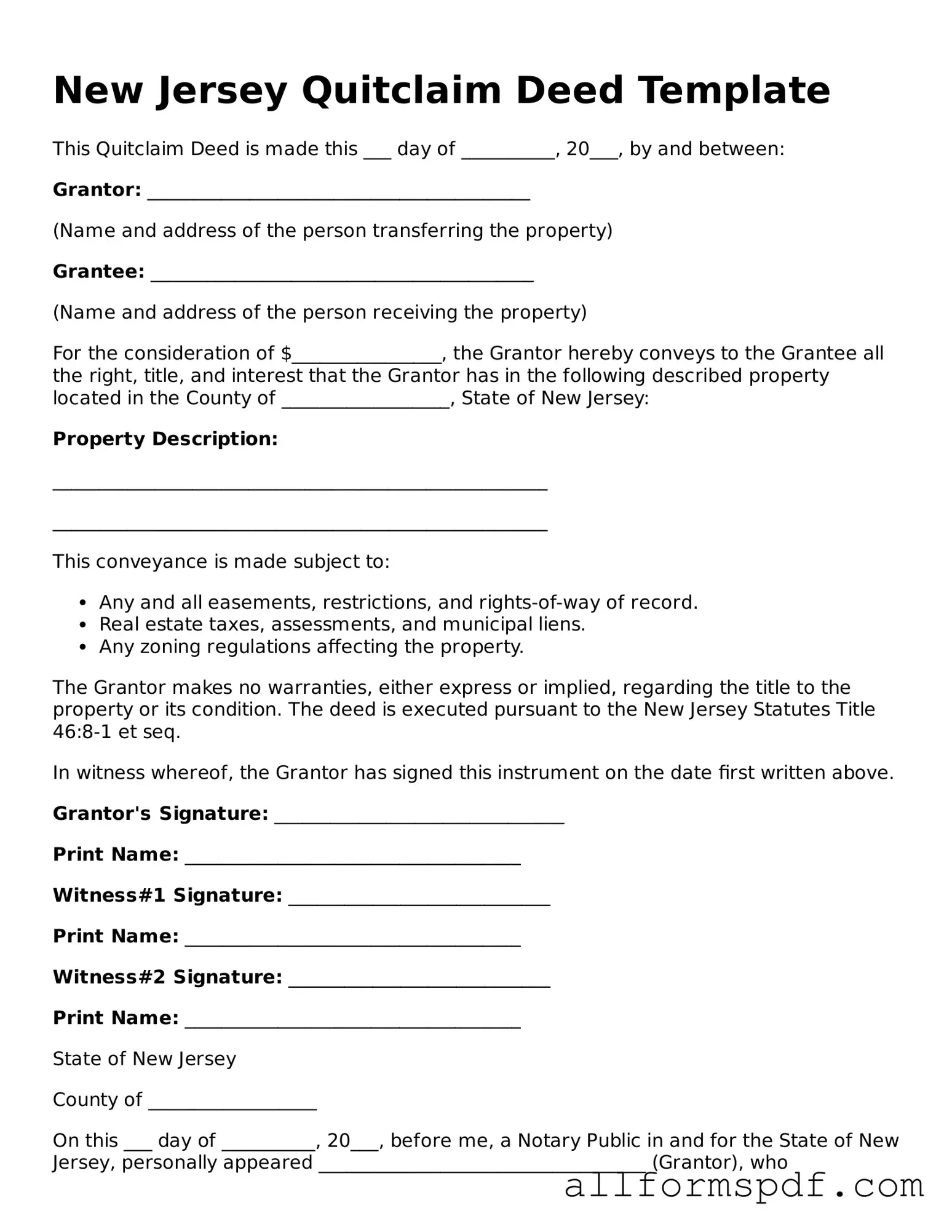Fillable Quitclaim Deed Form for New Jersey
A Quitclaim Deed is a legal document used to transfer ownership of real estate from one party to another without any warranties or guarantees. In New Jersey, this form serves as a straightforward way to convey property rights, making it an essential tool for individuals involved in real estate transactions. Understanding its implications can help ensure a smooth transfer process.
Create My Quitclaim Deed Now
